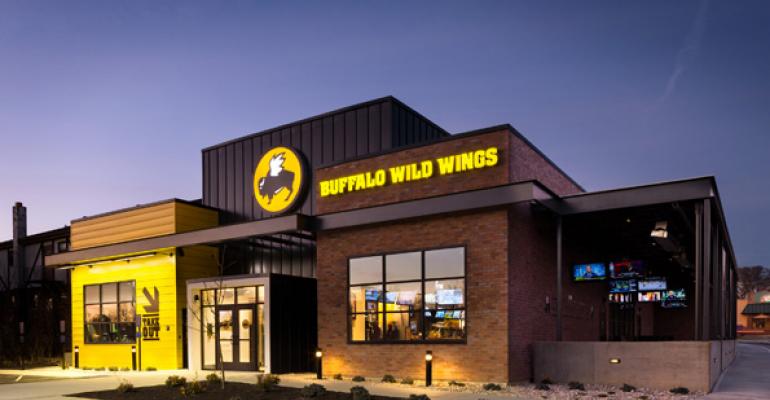 This post is part of the On the Margin blog.
This post is part of the On the Margin blog.
The boom times are over for Buffalo Wild Wings Inc.
The Minneapolis-based chicken wing chain, coming off its worst sales year since its initial public offering in 2003, is slowing development of traditional units this year in the face of rising site and construction costs.
Buffalo Wild Wings plans to build just 15 traditional, 5,400-square-foot locations this year. It is also exploring the idea of smaller locations and “alternative formats.”
“As urban populations are increasing, we are exploring how a downtown area location would best function,” Buffalo Wild Wings chief operating officer Jim Schmidt said.
Some of those alternative formats could be take-out and delivery-only locations, or the company could just open delivery-only locations.
Buffalo Wild Wings is hardly the only growth restaurant chain, especially in casual dining, that is slowing development. BJ’s Restaurants Inc. recently decided to slow development to focus on same-store sales. As I’ve noted before, casual-dining concepts in particular need to rethink development plans, at least for a while, amid eroding demand for that kind of dining and signs that the industry is oversupplied.
Buffalo Wild Wings is hardly the only operator reworking units to fit urban areas and to adapt to a consumer that is ordering more delivery and takeout.
But Schmidt suggested that new, traditional locations just don’t have the returns Buffalo Wild Wings had grown accustomed to in recent years.
At the end of 2008, Buffalo Wild Wings had 560 locations.
The financial crisis of 2008 plunged the world into its worst recession in 80 years. It hammered restaurant sales, which declined in absolute terms that year and in 2009. Thousands of restaurants across the country shut their doors. Few concepts were opening locations.
This led to decreased prices for real estate and construction, and chains with the ability to grow took full advantage. Buffalo Wild Wings has added an average of 85 locations a year since then.
“We were able to accelerate our growth and acquire sites at reasonable costs, resulting in very attractive returns,” Schmidt said.
Indeed, while casual-dining traffic has been weak for a decade now, these lower costs made it financially reasonable for companies to keep opening units.
But that argument is gone now that so many companies are in expansion mode. And, as Schmidt noted, consumer preferences keep shifting. In short, it makes less financial sense for a casual-dining operator to open locations today than it did just a couple of years ago.
Jonathan Maze, Nation’s Restaurant News senior financial editor, does not directly own stock or interest in a restaurant company.
Contact Jonathan Maze at [email protected]
Follow him on Twitter: @jonathanmaze

